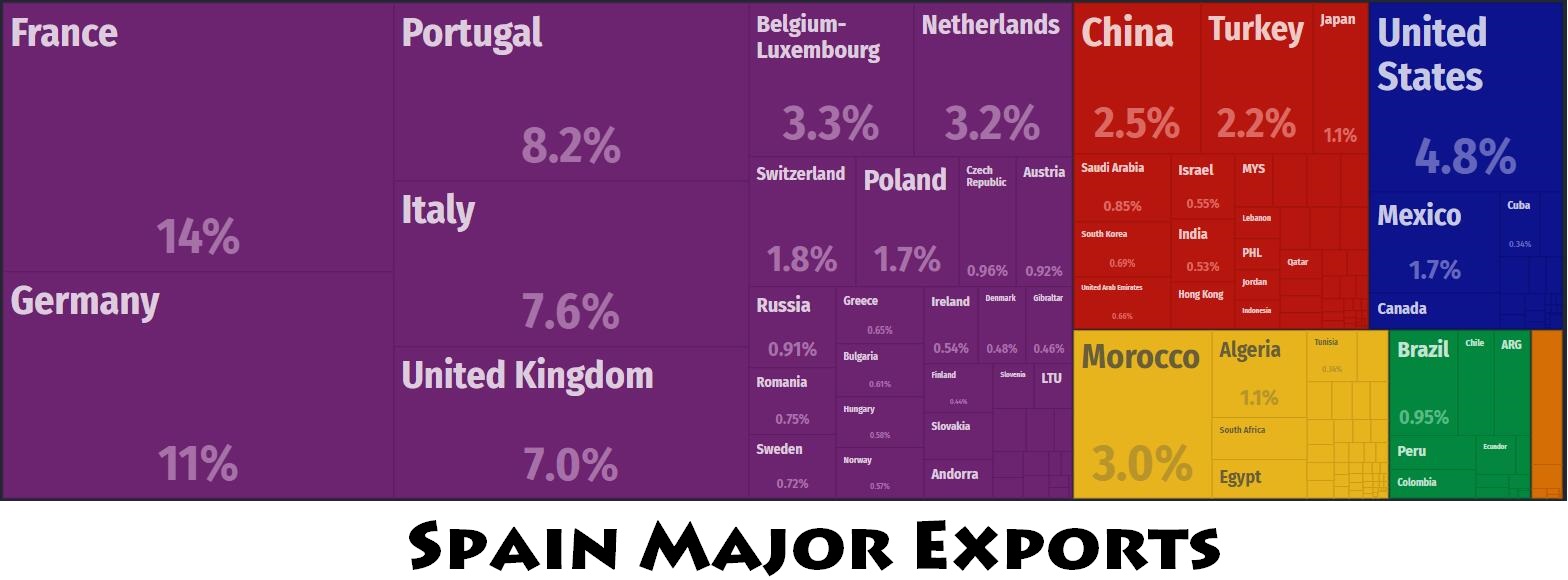
Spain’s main trading countries
Spain is a major player in global trade, with its economy deeply integrated into international markets. Its strategic location between Europe, Africa, and the Americas, coupled with its membership in the European Union (EU), makes Spain an important hub for trade. The country engages in substantial exports and imports, with its main trading partners concentrated in Europe, the Americas, and Asia.
Main Export Partners
Spain’s primary export partners are mainly European countries due to the EU’s single market. Some of the most significant trading partners include:
1. France: France is Spain’s largest trading partner, receiving a significant portion of its exports, including automobiles, machinery, and agricultural products. Close geographical proximity and shared infrastructure facilitate this trade.
2. Germany: Germany is another key destination for Spanish goods. Spain exports vehicles, electronics, and textiles to Germany. German industries rely on components and products from Spain for their supply chains.
3. Italy: Italy is a major market for Spanish exports, particularly in the automotive, food, and beverage sectors. The Mediterranean connection bolsters this strong trading relationship.
4. Portugal: As Spain’s neighbor, Portugal has close trade ties, with a focus on machinery, chemicals, and energy products. The Iberian market is highly integrated.
5. United Kingdom: Despite Brexit, the UK remains a key trading partner. Spain exports cars, food products, and clothing to the UK, while tourism and financial services also contribute to economic ties.
Main Import Partners
Spain imports various goods and services to meet its domestic needs and support its industries. Key import partners include:
1. Germany: Germany is a top supplier of machinery, vehicles, and electronic components to Spain. The German manufacturing industry provides critical inputs for Spanish industries.
2. China: China is a leading non-European import partner, providing electronics, machinery, textiles, and consumer goods. The rise of e-commerce has further boosted trade with China.
3. France: France is not only a top export destination but also a major supplier, sending machinery, chemicals, and consumer goods to Spain.
4. Netherlands: The Netherlands acts as a transit hub for many goods entering Spain. Spain imports energy products, chemicals, and agricultural goods from the Dutch market.
5. United States: The U.S. is a significant source of technology, pharmaceuticals, and agricultural products. Spain also benefits from strong investment and financial ties with the U.S.
Other Notable Partners
Morocco: As a close geographical neighbor, Morocco plays a significant role in Spain’s trade network, especially for agricultural products and textiles.
Turkey: Turkey supplies Spain with textiles and machinery, and the relationship is growing due to shared interests in energy and logistics.
Japan and South Korea: These countries are critical suppliers of automobiles, machinery, and high-tech products.
Conclusion
Spain’s trade relationships reflect its position as a bridge between Europe, Africa, and the Americas. The EU dominates its trade, but the country also maintains strong ties with global players like China and the U.S. Spain’s export strengths lie in its automotive, food, and textile industries, while it relies on imports of machinery, technology, and raw materials to sustain its economy. These diverse trading partnerships ensure Spain’s resilience and adaptability in the global market.




Leave a Reply